| POWERED by |
|
WEBSITE servers |
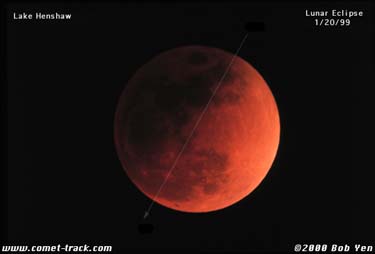
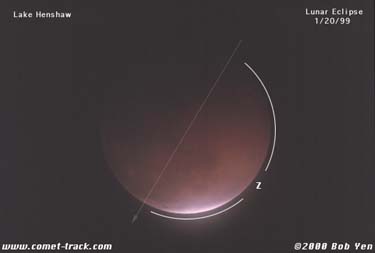
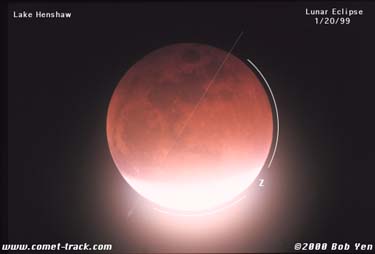
frame #9 (8:43pm PST 1/20)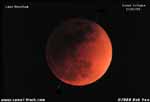 Click for HI-RES image |
mid-totality, 1 min exposure (Astia 100) NOTE: the arrow denotes the moon's path (approx. west -> east), thru the umbra. |
frame #6 (8:42pm PST 1/20)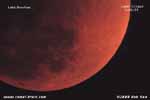 Click for HI-RES image |
mid-totality, CLOSEUP. 30sec min exposure (Astia 100) Blowup of the above totality shot, frame #6. Closeup of the crater Tycho. |
frame #16 (9:24pm PST 1/20)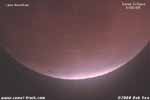 Click for HI-RES image |
blowup of above image. It shows the subtle color variation at the umbral-edge. Note the steel-blue hue. |
frame #21 (9:24pm PST 1/20)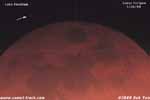 Click for HI-RES image |
blowup of above image. It shows a star near the lunar-limb. |